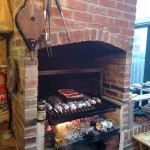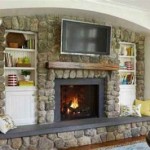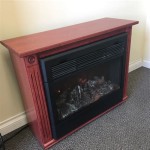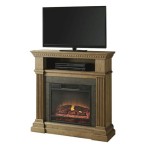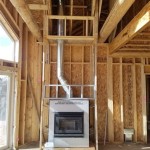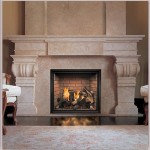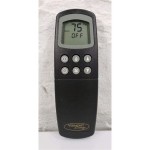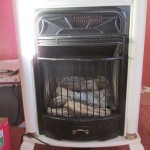Fireplace Wall Heating: A Comprehensive Guide
Fireplace wall heating represents a convergence of aesthetic appeal and functional warmth. This heating solution involves integrating a fireplace, often electric or gas, into a wall structure, creating a focal point in a room while simultaneously distributing heat. The popularity of fireplace wall heating stems from its space-saving design, modern aesthetics, and ability to supplement or even replace traditional heating systems in certain areas.
The concept of fireplace wall heating encompasses various designs, fuel types, and technological advancements. From sleek, linear electric fireplaces mounted flush against the wall to more traditional-looking gas fireplaces recessed into custom-built structures, the options are diverse. Understanding the different types, benefits, and installation considerations is crucial for homeowners considering this heating solution.
This article explores the key aspects of fireplace wall heating, encompassing its different types, advantages, installation processes, and factors to consider when selecting the right option for a home.
Types of Fireplace Wall Heating
The market offers several types of fireplace wall heating systems, each with unique characteristics and operational principles. The primary distinctions lie in the fuel source used and the installation requirements.
Electric Fireplace Wall Heating: Electric fireplaces are among the most versatile and easily installed types. They operate by converting electrical energy into heat, often using a heating coil or infrared technology. These fireplaces typically feature realistic flame effects created by LEDs and mirrors, enhancing their visual appeal. Electric fireplaces can be directly mounted on a wall or recessed into a wall cavity. They require a readily available electrical outlet and are generally easier to install than other types.
The heat output of electric fireplaces is measured in British Thermal Units (BTUs) or watts. Most units can provide supplemental heat for a room of moderate size. Some models also feature thermostats and timers for precise temperature control. Electric fireplaces are a popular choice for apartments, condos, and homes where gas line access is limited or undesirable.
Gas Fireplace Wall Heating: Gas fireplaces use natural gas or propane to generate heat. They offer a more authentic flame appearance and can provide a significant heat output. Installation of a gas fireplace typically requires a professional installer and includes connecting the fireplace to a gas line and venting exhaust gases outside. Gas fireplaces are often more expensive to install than electric models but can offer lower operating costs, depending on gas prices.
Gas fireplaces come in direct vent and vent-free models. Direct vent fireplaces draw combustion air from outside and vent exhaust gases directly outside through a sealed system. Vent-free fireplaces, also known as ventless fireplaces, do not require venting, but they must be installed in well-ventilated areas and may be subject to local building codes. Direct vent options are generally considered safer and more efficient.
Ethanol Fireplace Wall Heating: Ethanol fireplaces use liquid ethanol fuel to produce a real flame. They don't require a chimney or vent, making them relatively easy to install. However, they produce less heat than gas or electric fireplaces and require the periodic purchase of ethanol fuel. Ethanol fireplaces are often chosen for their contemporary design and environmental friendliness, as ethanol is a renewable fuel source.
Ethanol fireplaces are generally considered decorative heating solutions rather than primary heat sources. They are suitable for smaller spaces and provide a visual ambiance. They do, however, require careful handling of the ethanol fuel and proper ventilation to ensure safe operation.
Gel Fireplace Wall Heating: Gel fireplaces utilize gel fuel canisters to create a flame. Similar to ethanol fireplaces, they do not require a vent or chimney. Gel fireplaces offer a clean and easy heating option that adds a touch of elegance to any room. The heat output from gel fireplaces is relatively low, making them more suitable for ambiance than substantial heating.
Gel fireplaces are a safe and convenient alternative to traditional wood-burning fireplaces, as they eliminate the need for firewood, ash cleanup, and chimney maintenance. However, the cost of gel fuel can be a recurring expense.
Advantages of Fireplace Wall Heating
Fireplace wall heating offers numerous advantages, making it an appealing option for homeowners seeking both functionality and aesthetic enhancement. These advantages include improved heating efficiency, space-saving design, and enhanced visual appeal.
Space Efficiency: Traditional fireplaces often require significant floor space due to their hearth and chimney structure. Fireplace wall heating, particularly electric models, can be mounted flush against a wall or recessed into a wall cavity, saving valuable floor space. This is particularly beneficial in smaller homes, apartments, and condos where space is limited.
By integrating the fireplace into the wall structure, homeowners can maximize the usable area of their rooms. The streamlined design of wall-mounted fireplaces contributes to a modern and uncluttered aesthetic. This is especially appealing for those who desire a minimalist interior design.
Aesthetic Appeal: Fireplace wall heating can serve as a focal point in any room, adding visual interest and warmth. The sleek and modern designs of many wall-mounted fireplaces complement contemporary interior styles. The realistic flame effects of electric fireplaces and the authentic flame of gas fireplaces create a cozy and inviting atmosphere.
Fireplace wall heating systems are available in a variety of styles, sizes, and finishes, allowing homeowners to customize their heating solution to match their personal preferences and décor. The ability to choose from different frame materials, flame colors, and lighting options further enhances the aesthetic versatility of these fireplaces.
Supplemental Heating: Fireplace wall heating can provide supplemental heat to specific areas of a home, reducing the reliance on central heating systems. This can lead to energy savings, especially in rooms that are frequently occupied. By heating only the areas that need it, homeowners can avoid wasting energy heating unoccupied spaces.
The zone heating capabilities of fireplace wall heating allow for precise temperature control in different areas of the house. This is particularly useful in open-concept homes where maintaining a consistent temperature throughout the entire space can be challenging. Supplemental heating can also improve comfort levels in rooms that tend to be colder, such as basements or sunrooms.
Installation and Considerations
The installation process for fireplace wall heating varies depending on the type of fireplace and the existing structure of the home. Electric fireplaces are generally the easiest to install, while gas fireplaces require professional expertise due to the gas line connection and venting requirements. Proper planning and adherence to building codes are essential for a safe and successful installation.
Electrical Requirements: Electric fireplaces require a dedicated electrical circuit to ensure safe and reliable operation. The amperage of the circuit should match the wattage of the fireplace. It is recommended to consult with a qualified electrician to assess the electrical capacity of the home and ensure that the wiring is adequate for the fireplace’s power consumption.
The placement of the electrical outlet should be convenient for the fireplace's power cord, and the outlet should be properly grounded. Using extension cords is generally discouraged, as they can pose a fire hazard. Some electric fireplaces can be hardwired directly into the electrical system, eliminating the need for an outlet.
Venting Requirements: Gas fireplaces, particularly direct vent models, require a venting system to exhaust combustion gases safely outside. The venting system must be installed according to the manufacturer's instructions and local building codes. Improper venting can lead to carbon monoxide poisoning, a serious health hazard.
The type of venting required depends on the specific gas fireplace model. Direct vent fireplaces use a dual-pipe system that draws air from outside and vents exhaust gases directly outside through a sealed system. Vent-free fireplaces do not require venting, but they must be installed in well-ventilated areas and may be subject to local building codes.
Safety Considerations: Safety should be a top priority when installing and operating any type of fireplace. Fireplace wall heating systems should be installed by qualified professionals who are familiar with local building codes and safety regulations. Regular maintenance and inspections are essential to ensure safe and reliable operation.
It is important to keep flammable materials away from the fireplace and to never leave a fireplace unattended while it is in operation. Smoke detectors and carbon monoxide detectors should be installed in the vicinity of the fireplace to provide early warning of any potential hazards. Regular cleaning of the fireplace and its surrounding area can help prevent the buildup of dust and debris, which can pose a fire risk.
Cost Analysis: The cost of fireplace wall heating can vary significantly depending on the type of fireplace, the complexity of the installation, and the ongoing operating costs. Electric fireplaces typically have lower initial costs but may have higher operating costs due to electricity consumption. Gas fireplaces have higher initial costs but may have lower operating costs depending on gas prices.
Factors to consider when evaluating the cost of fireplace wall heating include the purchase price of the fireplace, the installation costs, the cost of fuel (electricity, gas, or ethanol), and the maintenance costs. It is important to compare the long-term costs of different types of fireplaces to determine which option is the most cost-effective for a particular home.
Building Codes and Permits: Before installing any type of fireplace, it is important to check local building codes and obtain any necessary permits. Building codes may regulate the type of fireplace that can be installed, the venting requirements, and the electrical requirements. Failure to comply with building codes can result in fines and the need to remove the fireplace.
Obtaining the necessary permits can ensure that the installation is performed safely and in compliance with all applicable regulations. The permitting process typically involves submitting plans to the local building department and undergoing inspections to verify that the installation meets the required standards. Consulting with a qualified contractor or building inspector can help homeowners navigate the permitting process.

Real Flame 65 In Wall Mount Recessed Electric Fireplace Insert Black 5560 The Home Depot

Lifeplus 1500 Watt Black Electric Fireplace Wall Mounted Heater Freestanding With 10 Colorful Flame Quiet Oshe0034 Wfp26 The Home Depot

Manastin 50 Electric Fireplace Recessed And Wall Mounted Ultra Thin Heater Silence Linear W Timer Multicolor Flame Crystal 750w 1500w Touch Screen Remote Control Com

36 Electric Fireplace Front Vent Wall Mount Or Recessed 3 Color Led Flame 5 Levels Of Brightness Media Options Remote Control By Northwest Target
Classicflame Talissa 42 Wall Mounted Electric Fireplace Costco

42 Electric Fireplace Wall Mounted Freestanding Heater Remote Control 1500w 1 Unit Fry S Food

Geniqua 24 Wall Insert 1400w Electric Fireplace Heat W Remote Led Flame Timer Heater Com

Real Flame 65 In Wall Mount Recessed Electric Fireplace Insert Black 5560 The Home Depot

Recessed Or Wall Mount Electric Fireplace Installations Explained Touchstone Home S Inc

36 034 Electric Fireplace Wall Mounted Amp Freestanding Heater Remote Control 1500w
Related Posts

